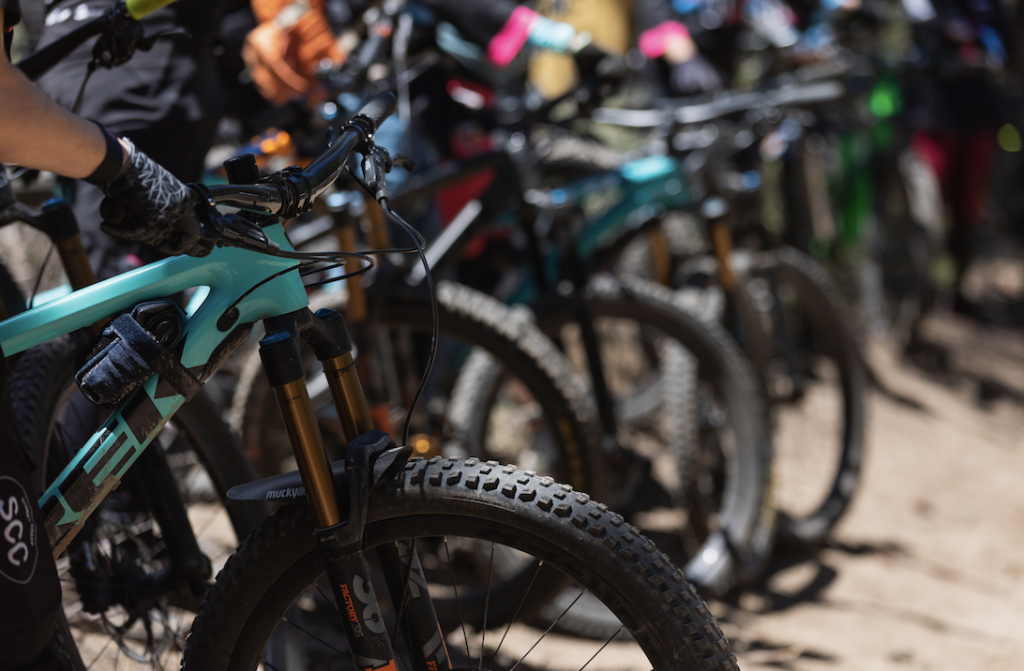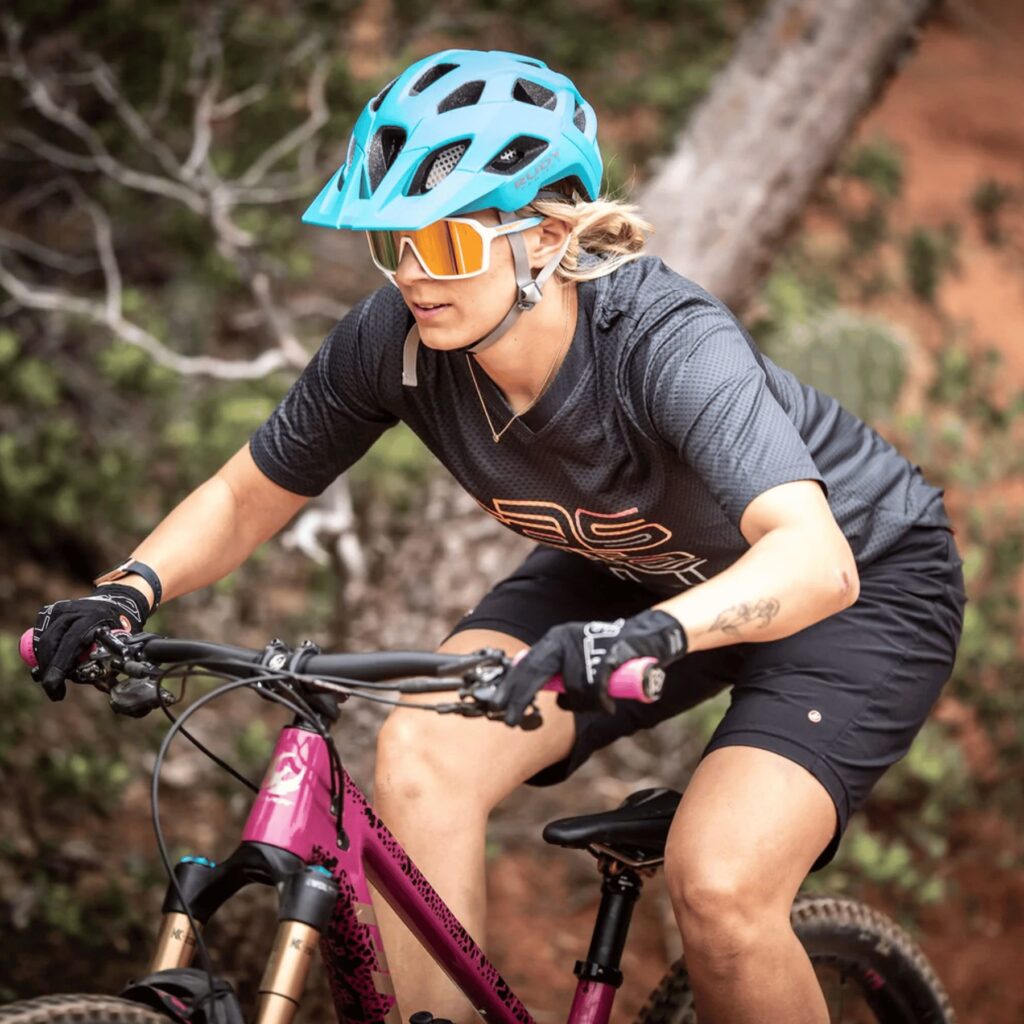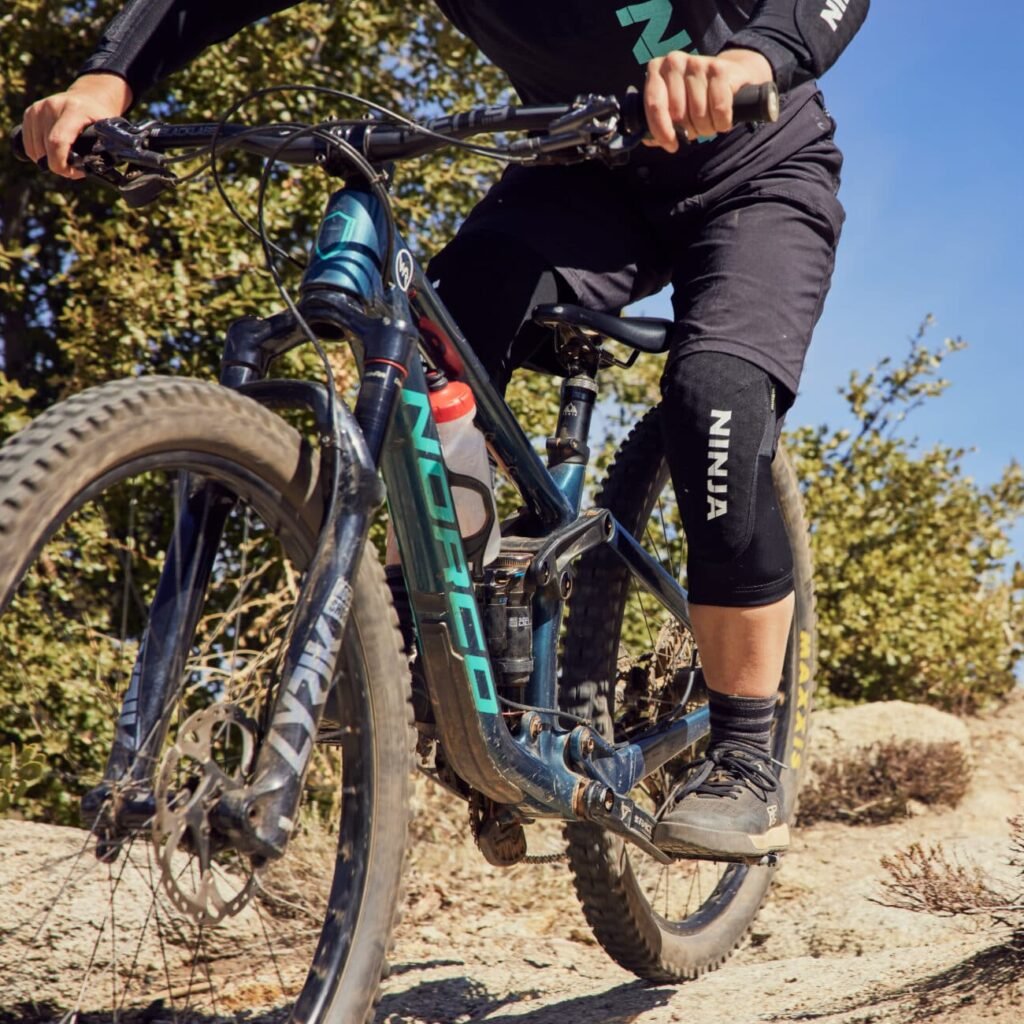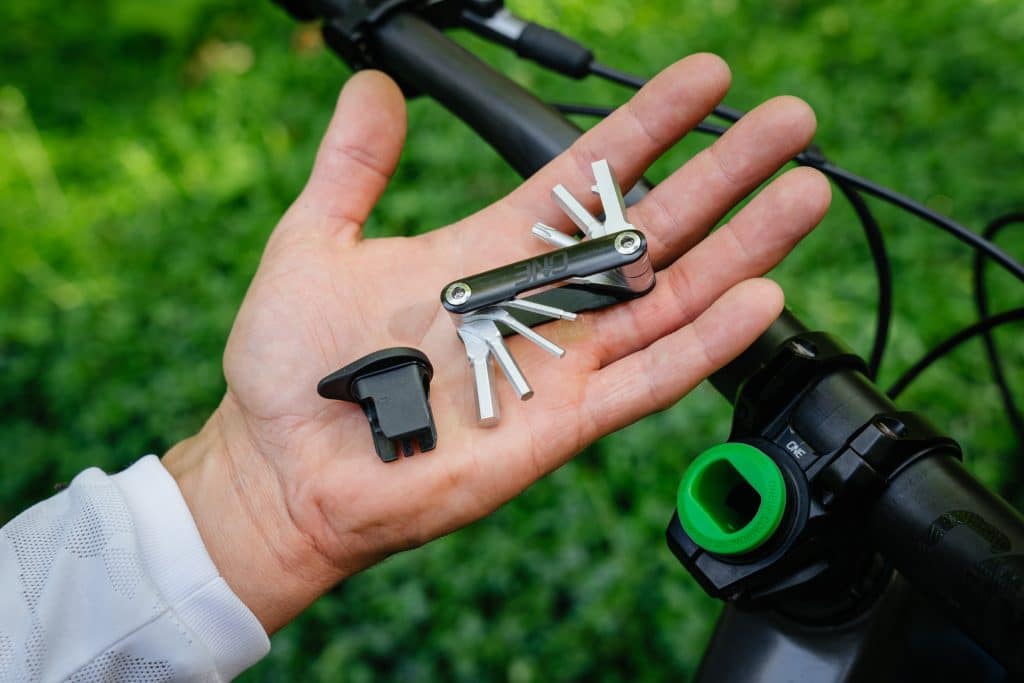No products in the cart.
The Mountain Bike Essentials
Mountain biking is a thrilling activity that requires a combination of skill, endurance, and the right equipment. Whether you are a seasoned rider or a beginner, having the right gear is crucial to ensure a safe and enjoyable experience. In this article, we’ll take a look at the mountain bike essentials you will need to make the best out of your ride.
The Most Essential, The Bike

First and foremost, a good quality mountain bike is a must-have. The type of bike you choose will depend on the type of riding you plan to do. Different mountain bikes cater to different styles of riding, such as cross-country, trail riding, or downhill. Ensure you choose a bike that suits your riding style, skill level, and budget.
The Essential Gear To Keep You Safe
Next up, you’ll need a helmet to protect your head in case of a fall. A well-fitted helmet should be snug and comfortable and should not wobble when you shake your head. It’s essential to replace your helmet if you’ve had a crash or if it’s been more than five years since you purchased it.

A good pair of mountain bike shoes is also essential because they provide the grip and support you need to tackle tough terrain and maintain control over your bike. The right shoes can also absorb shock and protect your feet from injury while riding over rocks, roots, and other obstacles. Additionally, good mountain biking shoes are designed to provide ventilation, keeping your feet cool and dry, even on long rides. They also offer protection against mud and rain, ensuring your feet stay comfortable and dry. These shoes should provide excellent grip, stability, and support. Mountain bike shoes come with cleats that clip into the pedals, providing a secure connection between you and the bike, or a flat sole that grip to pedals more than standard shoes.
Eye Protection
Eye protection is essential for mountain bikers because it shields your eyes from harmful elements like dust, debris, and branches while riding through rough terrains. It also protects your eyes from the sun’s UV rays, which can cause sunburn and long-term damage. Wearing eye protection can enhance your vision by reducing glare and improving clarity, allowing you to see obstacles and react faster. Furthermore, good eye protection can also provide wind resistance, reducing the chances of teary eyes and eye fatigue. So, make sure to grab a pair of high-quality glasses or goggles before hitting the trails.
Hand Protection
Wearing gloves while mountain biking is important because they protect your hands from injuries and blisters caused by frequent friction with handlebars and rough terrains. They also provide grip and improve your control over the bike. In addition, gloves can help absorb shock and vibrations from rough terrain, reducing the risk of hand fatigue and injury. Furthermore, gloves can also keep your hands warm on chilly rides and protect them from the sun’s harmful UV rays. So, make sure to put on gloves before your next mountain biking adventure.
Pads

Wearing pads when mountain biking is crucial for protecting your body from impacts and injuries while riding. Pads can help absorb shock and reduce the risk of bruises and scrapes, especially on your elbows, knees, and hips. They also provide extra cushioning and support, allowing you to ride with confidence and tackle tough terrain with ease. Finally, pads are designed to fit snugly and comfortably, allowing you to move freely while riding. So, whether you’re a beginner or an experienced rider, make sure to put on your pads before your next mountain biking adventure. Finding comfortable pads, like the Hooligan MTB Pads will help ensure that you do not have to sacrifice comfort for safety. They’ll give you the peace of mind you need to ride with confidence and tackle any terrain that comes your way.
Clothing
When it comes to clothing, comfort is key. Lightweight, breathable clothes made of moisture-wicking material will help keep you cool and dry during your ride. A sweat drenched shirt will attract dust and could cause uncomfortable chafing. Also, the right clothing can provide extra protection if you crash while out on the trails. Opt for full-fingered gloves to protect your hands from blisters, cuts, and abrasions.
The Extra Essentials For Biking
Mountain biking can be an unpredictable sport, and carrying a repair kit is always a smart idea. The kit should include items such as a pump, spare tubes, tire levers, and a multi-tool to make repairs on the trail.

Finally, hydration is crucial for long rides. Invest in a good quality hydration pack or water bottles and make sure you stay hydrated throughout your ride. There are many options available depending on your needs. A hydration pack is convenient as it keeps a hose readily available and provides extra storage for tools and snacks.
Knowledge
One of the most important aspects of mountain biking is knowledge, which encompasses a wide range of topics, including trail navigation, bike maintenance, safety procedures, and technical skills. Having a good understanding of these aspects can help mountain bikers improve their performance, avoid accidents, and make the most out of their experience on the trails. For example, knowing how to read a trail map and interpret trail markings can help bikers plan their routes and avoid getting lost. Likewise, having basic bike maintenance knowledge can help prevent mechanical issues and keep the bike in good condition, ensuring a safer and more enjoyable ride. Knowing how to safely and correctly ride, much like you learn in a skills clinic, can also improve the experience. In short, knowledge is an essential element for mountain biking, and it can make a significant difference in a biker’s experience on the trails.
In conclusion, starting mountain biking requires more than just a bike. A combination of the right gear and equipment will ensure you have a safe and enjoyable ride. So, take the time to invest in quality gear, and get ready to hit the trails!
 USE CODE: SPRINGMTB
USE CODE: SPRINGMTB

